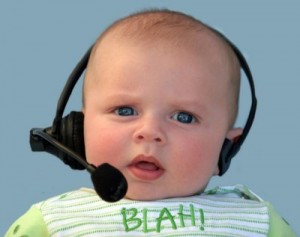
While the idea of “talking to the right leads at the right time” may strike you as completely commonsensical in your mind, it’s far from being common practice in the real world. Numerous studies on lead response management commissioned by independent marketing and sales think-tanks have shown that phone-based prospect follow-up activities of most companies typically overlook the importance of demonstrating prompt and timely responses. This post looks at some research findings that can potentially enhance the timeliness of your communications with a B2B mailing list.
In his article “Why Companies Waste 71% of Internet Leads,” Ken Krogue, co-founder of InsideSales.com, cites a widely-read study spearheaded by Dr. James Oldroyd of the Kellogg School of Management on lead response. The research material featured analysis of literally hundreds of thousands of data points surrounding follow-up teleprospecting and lead handling, providing a highly accurate picture of the underlying issues. The numbered items below are few points taken from the article and are aimed at helping you develop timing with your cold calling list.
1. Some days are better than others.
While this may seem a universal rule (and a statement that gives us an irritatingly circular argument here), there’s just no point ignoring it. Certain days of the week offer a higher likelihood of reaching and connecting with prospects than the rest would. Dr. Oldroyd’s findings indicate Wednesdays and Thursdays give as much as a 50% improvement in reaching leads by phone compared to calling them up on other days.
2. Afternoons and early evenings are ideal for reaching leads.
According to Dr. Oldroyd’s lead response management study, the worst possible time to try reaching prospects by phone is right after lunchtime. On the other hand, you’ll be able to improve your chances of connecting with leads by as much as 114% if you call them up some time between 4 in the afternoon and 6 in the evening.
3. Leads are best qualified at the start or end of the working day.
If you’re calling leads to qualify or set an appointment with them, your best bet at landing a meeting would be to place your calls between 8 and 9 in the morning or 4 to 5 in the afternoon. Dr. Oldroyd’s data reveal that these times increase your success rates by approximately 164% compared to what you might derive from calls made some time during 1 to 2 in the afternoon.
4. Persistence does pay off.
Ken Krogue’s InsideSales.com also conducted a series of in-house research on lead response management and came up with interesting findings as well. In particular, the group focused on determining the optimal number of dials it would take to reach a prospect and analyzed data related to contact ratios (the percentage of contacts over the total dial attempts made) which the researchers noted to lie between 10% and 11%. This means that you have to make at least 9 dial attempts before you can expect a prospect to listen to you over the phone.
Timing is definitely everything and it’s as crucial in lead generation and marketing success as anywhere else. Although the points we’ve covered previously may be applicable to your own campaign, there’s no guarantee that they’ll deliver the optimal results that you seek. Nonetheless, they’re still worth looking into and considered as the parameters for your own testing. At the very least, these ideas form a sound testing basis for campaigns involving a US telemarketing contact database.